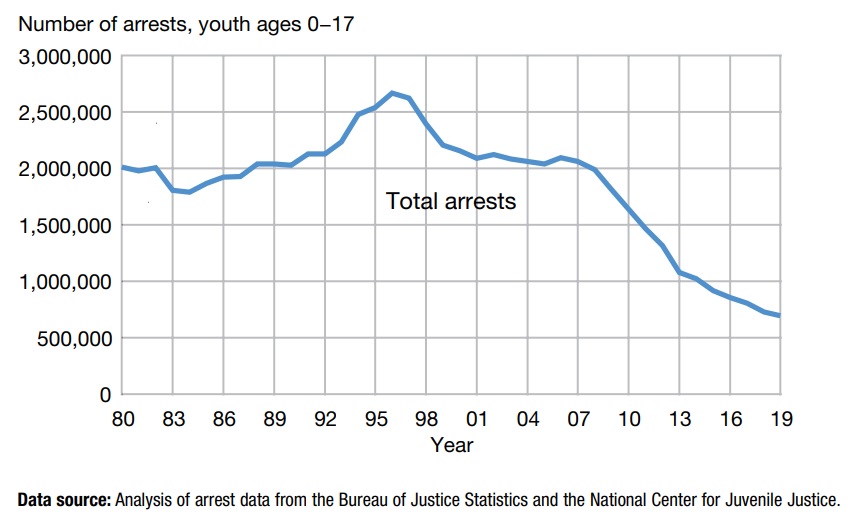Author(s): Office of Juvenile Justice and Delinquency Prevention (OJJDP)
Published: May 2021
Report Intro/Brief:
“This bulletin documents the latest trends in arrests involving juveniles (youth younger than age 18) by drawing on arrest estimates developed by the Bureau of Justice Statistics and the National Center for Juvenile Justice based on analyses of data from the Federal Bureau of Investigation’s Uniform Crime Reporting program. Overall, juvenile arrests have been on the decline for more than two decades, but patterns vary by demographic group and offense.
In 2019, law enforcement agencies made an estimated 696,620 arrests of youth younger than 18—the fewest arrests of juveniles in nearly 4 decades.

- Arrests of juveniles (youth ages 0–17) peaked in 1996, at nearly 2.7 million. Arrests of juveniles have since declined—the number in 2019 was 74% below the 1996 peak. In comparison, arrests of adults fell 24% during the same period.
- After increasing in recent years, the juvenile arrest rate for murder fell 6% in the last year, and the rates for robbery and aggravated assault reached a new low in 2019.
- Juvenile arrest rates for property crimes have declined in recent years. By 2019, juvenile arrest rates for larceny-theft, burglary, and arson were at their lowest levels since at least 1980, while the rate for motor vehicle theft was above its 2013 low point.
- In 2019, the violent crime arrest rate for older juveniles (ages 15–17) was lower than the rates for young adults (ages 18–20 and 21–24).
- Male and female juvenile arrest rates have declined in the last 10 years; however, the relative declines have been greater for males than for females across many offenses. As a result, the female share of juvenile arrests has grown since 1980.
- Juvenile arrest rates involving violent crimes (such as murder and robbery) tend to be much higher for black youth than for white youth. Conversely, arrest rates for liquor law violations were higher for American Indian and white youth than black youth.”
>>> CLICK HERE to see all of Youth Today’s REPORT LIBRARY




























